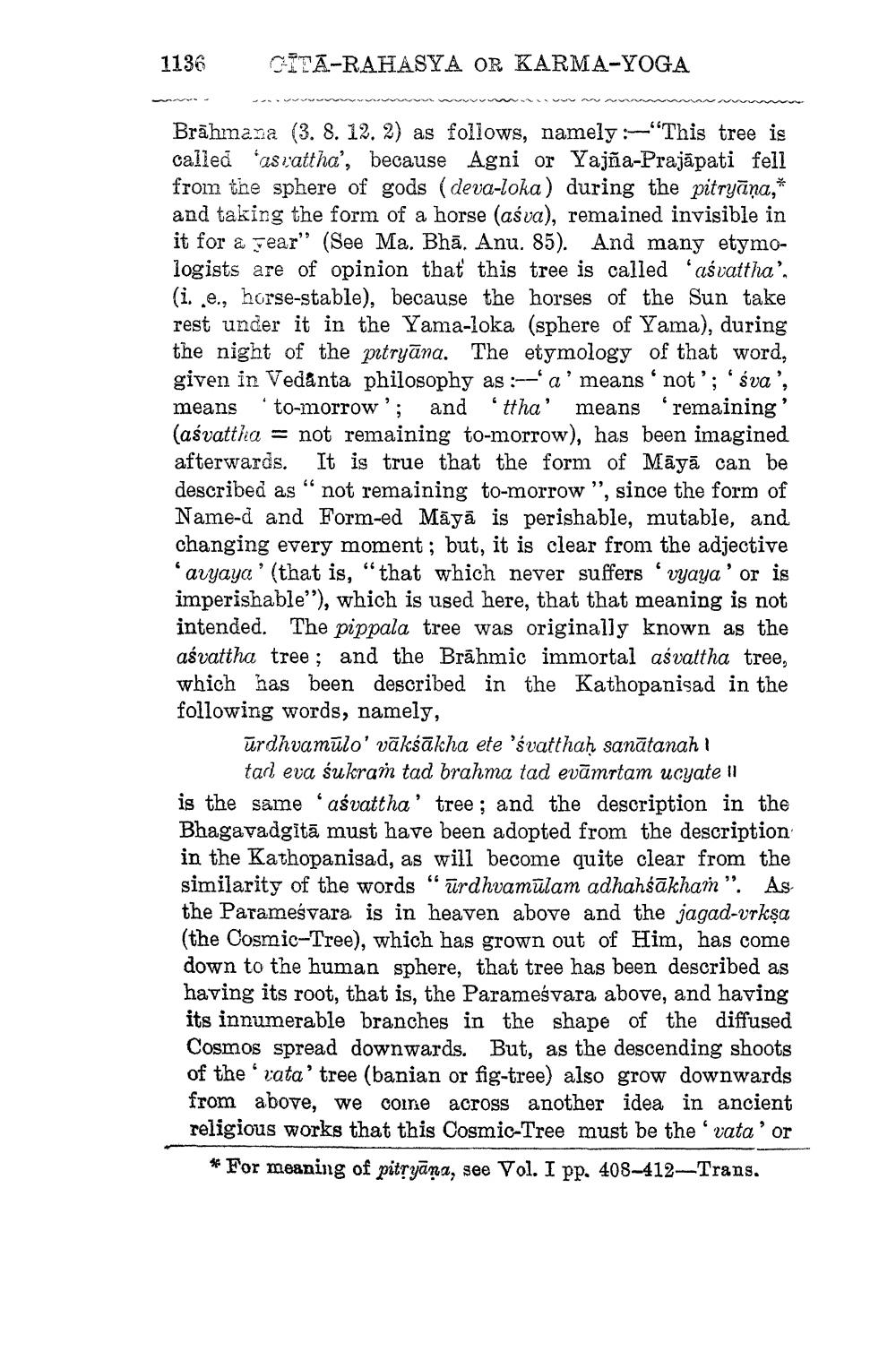________________
1136 CITĀ-RAHASYA OR KARMA-YOGA
wwwwwwwwwwwwwwwwwwwwwwwwwwwwww Brāhmana (3. 8. 12. 2) as follows, namely:-"This tree is called asrattha', because Agni or Yajña-Prajāpati fell from the sphere of gods (deva-loka) during the pitryāņa, * and taking the form of a horse (aśva), remained invisible in it for a year" (See Ma. Bhā. Anu. 85). And many etymologists are of opinion that this tree is called "aśvattha'. (i..e., horse-stable), because the horses of the Sun take rest under it in the Yama-loka (sphere of Yama), during the night of the pitryāna. The etymology of that word, given in Vedanta philosophy as a' means 'not'; sva', means 'to-morrow'; and 'ttha' means 'remaining' (asvattha = not remaining to-morrow), has been imagined afterwards. It is true that the form of Māyā can be described as “not remaining to-morrow”, since the form of Name-d and Form-ed Māyā is perishable, mutable, and changing every moment; but, it is clear from the adjective 'avyaya' (that is, "that which never suffers "vyaya 'or is imperishable”), which is used here, that that meaning is not intended. The pippala tree was originally known as the aśvattha tree; and the Brāhmic immortal aśvattha tree, which has been described in the Kathopanisad in the following words, namely,
ūrdhvamūlo' vākšākha ete 'svatthah sanātanah 1
tad eva śukram tad brahma tad evūmrtam ucyate 11 is the same 'aśvattha' tree; and the description in the Bhagavadgitā must have been adopted from the description in the Kathopanisad, as will become quite clear from the similarity of the words “urdhvamūlam adhahśākham". Asthe Parameśvara is in heaven above and the jagad-vrkşa (the Cosmic-Tree), which has grown out of Him, has come down to the human sphere. that tree has been described as having its root, that is, the Parameśvara above, and having its innumerable branches in the shape of the diffused Cosmos spread downwards. But, as the descending shoots of the 'rata' tree (banian or fig-tree) also grow downwards from above, we come across another idea in ancient religious works that this Cosmic-Tree must be the 'vata' or
*For meaning of pitryāna, see Vol. I pp. 408-412-Trans.




